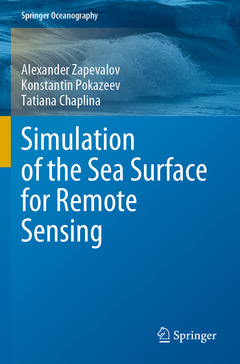Description
Simulation of the Sea Surface for Remote Sensing, 1st ed. 2021
Springer Oceanography Series
Authors: Zapevalov Alexander, Pokazeev Konstantin, Chaplina Tatiana
Language: English
Subjects for Simulation of the Sea Surface for Remote Sensing:
Approximative price 137.14 €
In Print (Delivery period: 15 days).
Add to cartPublication date: 10-2021
222 p. · 15.5x23.5 cm · Paperback
Approximative price 137.14 €
In Print (Delivery period: 15 days).
Add to cartPublication date: 10-2020
222 p. · 15.5x23.5 cm · Hardback
Description
/li>Contents
/li>Comment
/li>
Examines the formation of the reflected signal on the sea surface using remote sensing techniques
Shows how the wave nonlinearity affects the formation of a signal reflected from the sea surface
Reveals in-detail data and analyses from a stationary oceanographic platform located on the Black Sea




